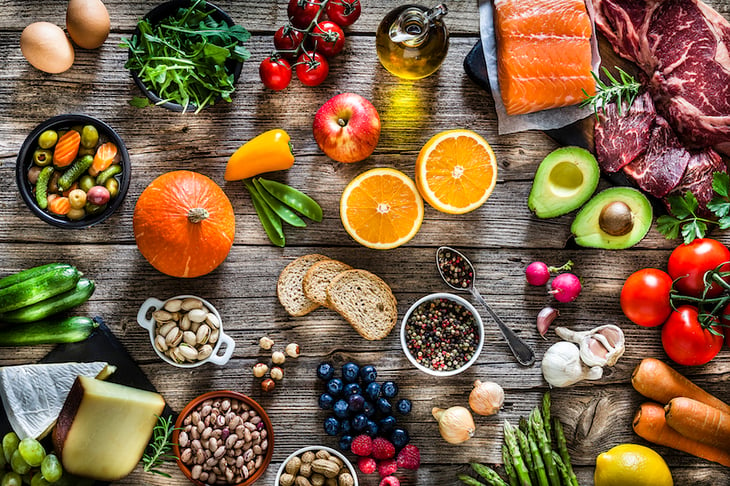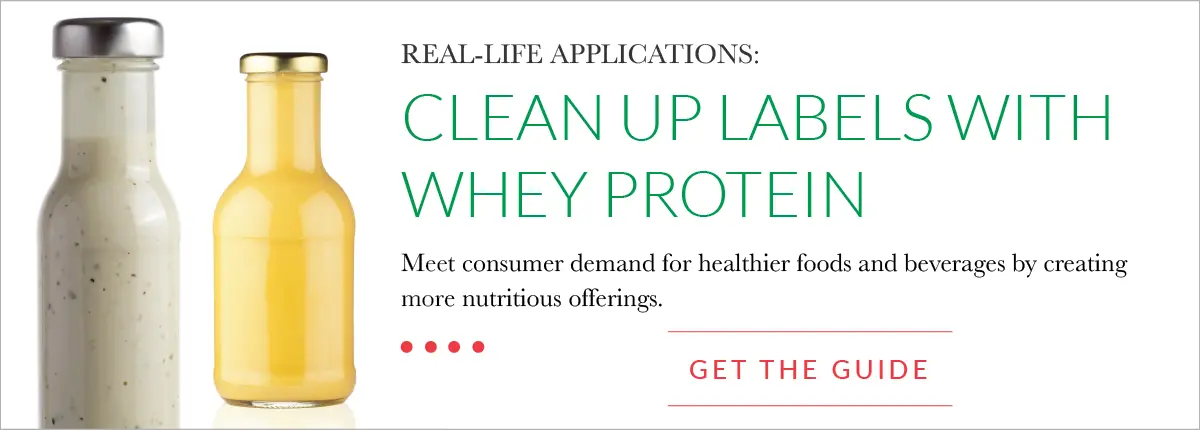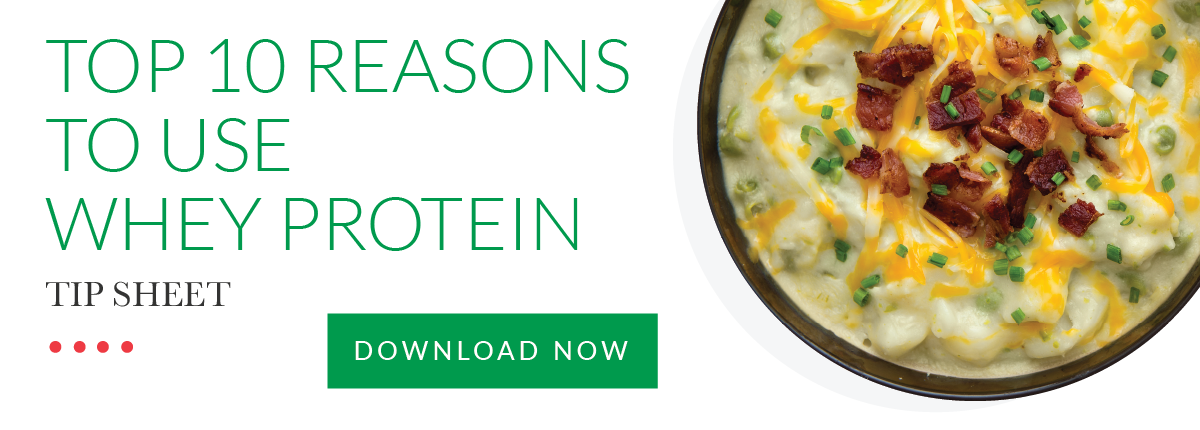
Gone are the days of limiting ourselves to grapefruits, celery juice and rice cakes in a never-ending quest for weight loss and wellness. The most popular new diet trends for 2022 that are attracting attention represent very diverse approaches.
What are the best diets of 2022 and trending foods that can help inform food and beverage industry research and development?
Not surprisingly, the coronavirus has influenced some consumer diet trends, with many boasting about their abilities to satisfy the taste buds, promote feelings of fullness and fuel our bodies.
Each of the latest diet trends seemingly has little in common, yet there are takeaways from each that food manufacturers should consider when formulating their products. Here, we’ll compare these diet trends and provide insights into how food manufacturers can cater to each.
1. Immune-Boosting Diet
Most consumers associate the word “diet” with weight loss, but there are many other reasons to change eating habits aside from fitting into a smaller pair of jeans. COVID brought on the pursuit of building stronger immune systems through nutrition. In response to the pandemic, the World Health Organization (WHO) issued updated dietary guidelines with the goal of maintaining a strong immune system and minimizing chronic diseases.
Of note is that they recommended nearly double their previously recommended amounts of five servings of fruits and vegetables. The new WHO guidelines target four servings of fruits daily and five servings of vegetables for a total of nine servings each day.
Foods containing macronutrients like vitamins A, C and D are also among their recommendations. Heart-healthy foods containing natural forms of these nutrients include mango, spinach, broccoli, citrus, nuts, seeds, avocados and others.
The WHO specifically calls out that protein consumption is an important factor in promoting immune health, noting that countries with lower protein consumption and malnutrition suffered higher numbers of COVID-19 cases. Manufacturers of protein bars have opportunities to combine all these factors together by incorporating whey protein isolate, nuts, seeds and dried fruits into their formulations.
2. Keto Diet
When it comes to diet trends, 2022 shows the strong staying power of the keto diet, an offshoot of the Atkins diet. Interestingly, it stands in contrast to many recommendations of the immune-boosting diet. In particular, most fruits (grapes, citrus, bananas, etc.) and some vegetables (carrots, sweet potatoes, corn, etc.) are considered off-limits due to their high levels of carbohydrates. Sugar in any form is a no-no.
At its root, keto (or ketogenic) involves eating “low-carb, high-fat” foods. Butter is in, but don’t expect to be slathering it on a bagel. The keto diet drastically reduces carbohydrates and replaces them with fat and protein. Where dietary guidelines recommend between 200 and 300 grams of carbs per day, someone on keto may consume as little as 20–30 grams daily.
In addition to high levels of fat, many on the keto diet also consume more protein, especially if they pair their diet with exercise. While those on keto can simply eat meat to get enough protein, many opt for the growing number of convenient keto products that have come on the market. A go-to ingredient in many of these products is whey protein, noted for its ability to support muscle growth and its superior health and nutrition benefits.
RELATED: The Best Whey Protein in Sports Nutrition
Protein powders catering to the keto trend containing whey protein isolate are flooding the market. Beyond supplements, however, many formulators are producing keto-friendly ice cream, desserts, protein bars, entrees, high-protein beverages and more.
A worry noted by some physicians is that keto is highly restrictive, often eliminating foods that are beneficial for our bodies. Because of its highly restrictive nature and adverse consequences like keto flu, many find a keto diet to be unsustainable for the long term.
Because the traditional keto diet promotes high fat as a way to achieve satiety, people who are genetically inclined to conditions linked to heart disease are strongly urged to consult with their physician prior to adopting a keto lifestyle.
3. MIND Diet
Where keto extols the virtues of bacon and beef, the MIND diet involves bok choy and brown rice with occasional meat. The MIND diet is a combination of the traditional Mediterranean diet and the DASH diet with an emphasis on cognitive brain health. MIND is an acronym for “Mediterranean-DASH Intervention for Neurodegenerative Delay.”
While less restrictive than keto, those following the MIND diet typically try to maintain mostly plant-based and vegetarian diets and avoid processed foods that can contain excessive amounts of sodium.
Targeted sodium levels on the MIND diet are substantially lower than the average intake of most Americans. The National Institutes of Health reports a link between dietary sodium intake and reduced cognitive function and dementia risk in middle-aged and older adults. On the heels of this research, the Food and Drug Administration (FDA) issued new sodium reduction guidelines for commercially processed, packaged and prepared foods.
Popular among Baby Boomers and older generations, the MIND diet aims at reducing the risk of Alzheimer’s disease and dementia. In general, it encourages eating mostly fruits, vegetables, legumes and whole grains, healthy fats like olive oil, and incorporating meat (especially fish) and animal products on occasion. It’s not much unlike the Mediterranean or flexitarian diet.
However, just because something is mostly plant-based doesn't mean it's healthy.
For example, some food manufacturers of plant-based meats include unhealthy levels of sugar, fat and sodium to compensate for the lack of flavor and texture. Sodium levels in a single serving can reach nearly 20% of recommended daily values compared to about 5% for a plain old burger. Likewise, some plant-based burgers can have nearly twice as many grams of saturated fat as a regular ground beef patty.
Most popular diets emphasize clean eating and sustainability, but some may be at risk of nutrient deficiencies by restricting meat and other animal products. Additionally, those who opt for plant-based proteins vs. whey proteins may miss out when it comes to nutrition and digestibility.
RELATED: Comparison: Whey Protein Crisps vs. Rice, Soy and Pea Proteins
4. Intuitive Eating
There’s one 2022 diet trend that isn’t, and has been growing in popularity in recent years, even being embraced by such celebrities as Demi Lavato and Camila Mendes. Intuitive eating challenges the “should” and “should not” approach to food and may upend the restrictive mainstream diet culture.
The concept of intuitive eating concludes that the incessant practice of restricting foods is actually making us fatter and that it simply doesn’t work, citing research showing that 95% of fad diets fail to maintain weight loss after five years.
Intuitive eaters reject the diet mentality, noting that losing weight is not necessarily associated with being healthy. A major study involving more than 100,000 adults and spanning more than four decades indicates that those with a higher BMI were more likely to live longer than those in the “healthy” (under 25 BMI) or underweight and obese categories. Furthermore, even those in the obese category had the same risks of death as those in the normal range.
With intuitive eating, people are encouraged to make peace with food by not labeling it as “good” or “bad” food groups, and to listen to physical cues for hunger and fullness. Eat and move joyfully with the goal of feeling satisfied, not how many calories you take in or burn. It doesn’t mean just eating whatever you want, however. It means tapping into your body’s intuitive ability to tell you what your body needs.
By not restricting and following unreasonable food rules, binges lose their appeal and nutritious foods (proteins, whole grains, vegetables, etc.) become more satisfying and appealing. Science backs it up, with more than 100 studies indicating that intuitive eating offers a multitude of health benefits.
2022 Diet Trend Tips for Food Manufacturers
What will the next “diet du jour” be? That question is what keeps many food processing companies and formulators up at night. The ability to formulate products that have staying power and can appeal to the majority of consumers is a key to remaining relevant and profitable in today’s ever-changing food culture.
Through the years and for years to come, whey protein remains a reliable all-natural ingredient that appeals to dieters and anti-dieters alike. Consumers value how whey protein contributes to feelings of fullness; it’s not empty calories and can minimize the urge to overeat. Additionally, it aligns with clean label initiatives and is favored for its nutritional benefits, satisfying clean flavor and its ability to be used in a wide variety of food products as an alternative to fresh dairy and eggs.
When you add in the cost savings and simplified storage requirements, whey protein’s appeal increases even further.
Want to stay on trend with an ingredient that has staying power? Reach out to the food scientists at Grande Custom Ingredients Group for innovative ideas incorporating whey protein in its many forms, and learn how it can replace high-cost ingredients like butter, eggs, milk, cream, cheese and more. There are a lot more reasons to consider whey protein, so be sure to check out our tip sheet below.





